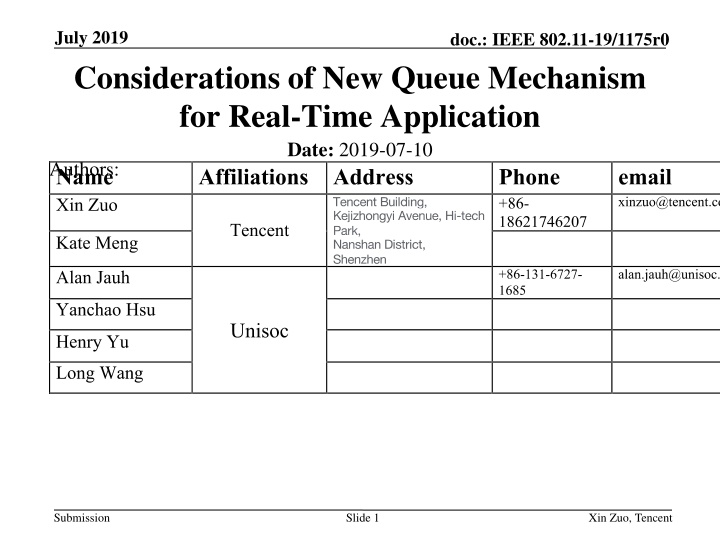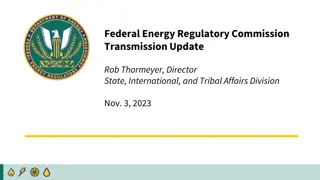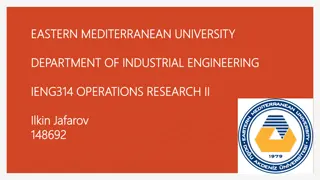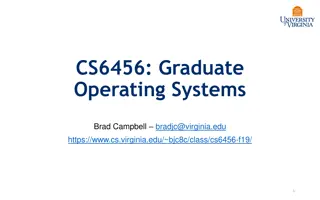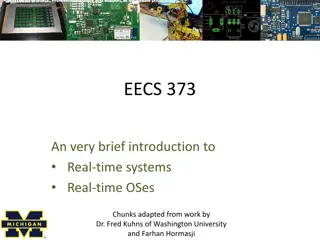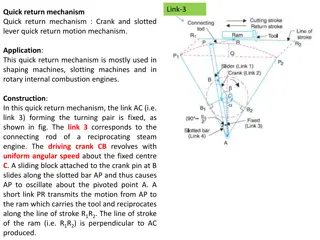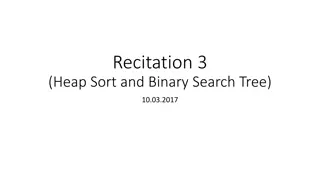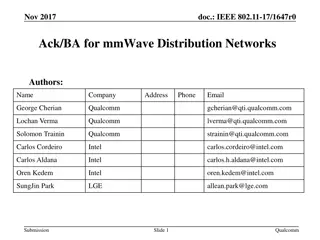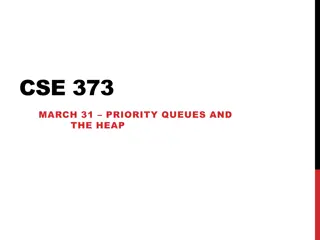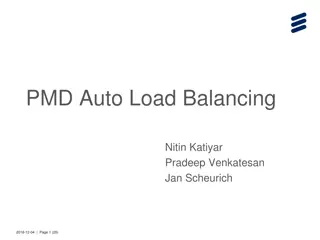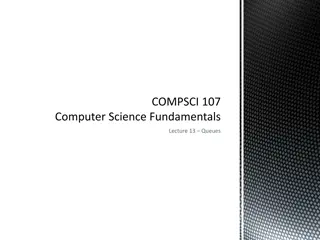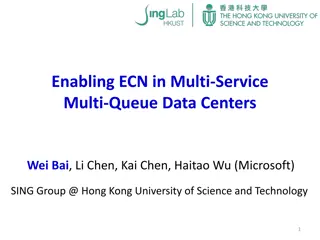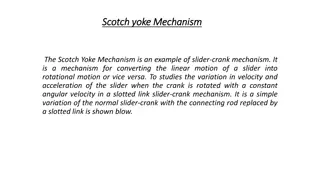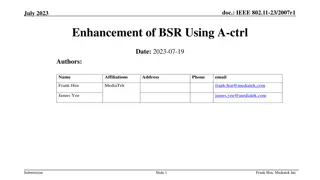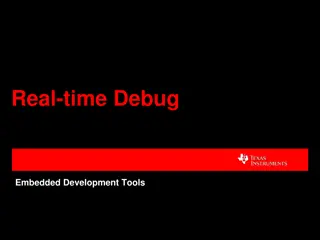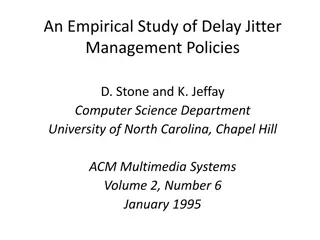New Queue Mechanism for Real-Time Application Considerations in July 2019
In July 2019, considerations were made for a new queue mechanism for real-time applications. The focus was on improving worst-case latency and jitter for latency-critical traffic, such as in online mobile gaming and manufacturing control. The proposed design aims to link access delay directly to required latency, categorize traffic based on various parameters, and grant higher priority in channel access. Tradeoffs between latency, throughput, prioritization, and fairness were highlighted, emphasizing the importance of balancing these factors. Different types of latency-critical traffic were identified, each presenting unique challenges and possibilities for improvement. The new queue design aligns with existing EDCA practices while enhancing the channel access procedure to meet the demands of real-time applications.
Download Presentation

Please find below an Image/Link to download the presentation.
The content on the website is provided AS IS for your information and personal use only. It may not be sold, licensed, or shared on other websites without obtaining consent from the author.If you encounter any issues during the download, it is possible that the publisher has removed the file from their server.
You are allowed to download the files provided on this website for personal or commercial use, subject to the condition that they are used lawfully. All files are the property of their respective owners.
The content on the website is provided AS IS for your information and personal use only. It may not be sold, licensed, or shared on other websites without obtaining consent from the author.
E N D
Presentation Transcript
July 2019 Considerations of New Queue Mechanism for Real-Time Application Date: 2019-07-10 Authors: doc.: IEEE 802.11-19/1175r0 Submission Slide 1 Xin Zuo, Tencent
July 2019 doc.: IEEE 802.11-19/1175r0 Abstract A few frames having worst-case latency are critical for some RTAs. There is lack of means to improve the worst-case latency/jitter for RTA, in current .11 design. Careful design is required to achieve the tradeoff Latency-critical traffic that is medium/low in transmitting frequency and small in frame size, may have the design freedom to fulfil the requirement by RTA. Submission Slide 2 Xin Zuo, Tencent
July 2019 doc.: IEEE 802.11-19/1175r0 Background Goal/Requirement PAR: This amendment defines at least one mode of operation capable of improved worst case latency and jitter. [1] A few frames experiencing worst-case latency may not degrade the average latency, but are critical to some RTAs. i.e. no responds in online mobile games, damaging the user experiences. accidents in remote control in manufacturing, etc. Submission Slide 3 Xin Zuo, Tencent
July 2019 doc.: IEEE 802.11-19/1175r0 Background Current EDCA may be unable to help improve worst- case latency. Discriminating AC queues is mainly in the probability to access to the wireless medium, w.r.t. large number of frames. Good at average potential worst-case latency. Once backoff counter is determined from [0,CW], the latency is almost determined. Some high-AC frames get unlucky potential worst-case latency ACs differentiate traffic, only according to QoS fields (DSCP, UP, etc.). Latency-critical traffic may be treated equally as throughput-critical traffic. potential worst-case latency AC could be stacked with frames. Potential worst-case latency Submission Slide 4 Xin Zuo, Tencent
July 2019 doc.: IEEE 802.11-19/1175r0 Background A new design of queue may improve by linking access delay directly to the latency required by the latency-critical traffic; categorizing traffic, taking into consideration more parameters; being grant with higher priority in channel access; etc. Need to consider the tradeoff, such as that between latency and throughput; that between prioritization and fairness; etc. Latency-critical traffic could be characterized into 4 types: Frequent and large in size too difficult to satisfy both. Frequent and small may damage the fairness, throughput, etc.. Less frequent and large possible to satisfy, but maybe challenging. Less frequent and small possible to satisfy, without much damaging. Also matches with the realistic RTA traffic, including online mobile gaming, remote control in manufacturing, specific IoT application, etc. Submission Slide 5 Xin Zuo, Tencent
July 2019 doc.: IEEE 802.11-19/1175r0 Sketch of New Queue The new design of queue respects EDCA. Speeding up the channel access procedure, when the frame waiting time is close to the required latency advertised. i.e., reducing backoff counter. other ways to speed up . Filtering frames according to not just QoS fields, but the size and frequency. Maintaining the throughput, fairness, etc. The new queue could be dynamically opened/terminated. Adapting to the change in network/channel. Avoiding stacking/abusing. frame frame frame frame frame frame Indicates latency required filter New Queue Reduce backoff counter Submission Slide 6 Xin Zuo, Tencent
July 2019 doc.: IEEE 802.11-19/1175r0 Simulations Detail design and simulations Submission Slide 7 Xin Zuo, Tencent
July 2019 doc.: IEEE 802.11-19/1175r0 Conclusions We emphasized the challenges the current EDCA trying to improve worst-case latency. Latency requirement of RTA can not be directly reflected. Current EDCA is good at average, but may need pay more attention on individual frames. QoS fields are not sufficient to discriminate among traffic. A new queue design could help improve the worst-case latency. We have sketch out the new design. Submission Slide 8 Xin Zuo, Tencent
July 2019 doc.: IEEE 802.11-19/1175r0 References [1] 802.11-18/1231r6 EHT draft proposed PAR Submission Slide 9 Xin Zuo, Tencent
